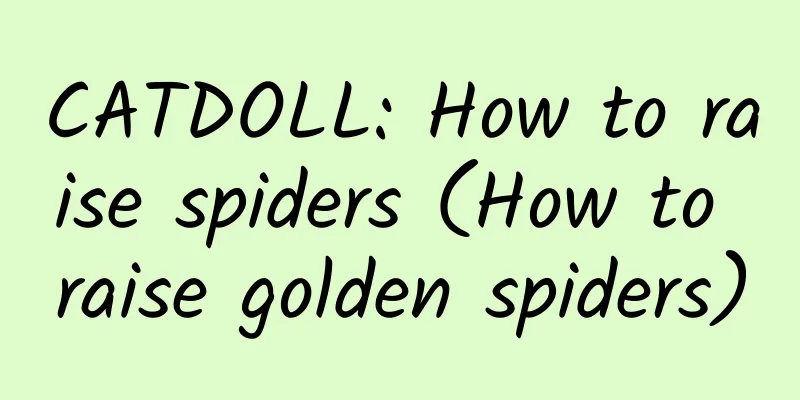CATDOLL : CATDOLL: What is the significance of semi-artificial sea urchin seedling collection? How to build a seedling collection site?

What is the significance of semi-artificial sea urchin seedling collection? How to build a seedling collection site?1. The significance of artificial seedling collection The method of collecting the planktonic larvae of sea urchins distributed in natural sea areas using appropriate artificial equipment and facilities supplemented by certain technical measures is often referred to as semi-artificial collection of sea urchins in sea areas or collection of sea urchins in sea areas. Adult sea urchins are not active, but they have a planktonic larval stage in their life history. Planktonic larvae can drift everywhere with the ocean currents, thereby expanding their distribution range and maintaining the prosperity of the species. In order to adapt to the habit of planktonic life, the larvae have structures such as cilia so that they can float with the water to suitable sea areas and settle down. This method is one of the more effective means of producing sea urchin seedlings to supplement the insufficient production of artificial sea urchin seedlings, improve the survival rate and effective utilization rate of natural seedlings in sea areas, and further reduce the cost of seedling production. 2. Seedling collection conditions There must be natural or artificially cultivated sea urchin resources near the seedling collection area, and there must be enough sea urchins with spawning ability. The concentration of sea urchins is related to inducing spawning and improving the fertilization rate. Due to the large water body, changing sea conditions and engulfment of harmful organisms in natural sea areas, a large number of sea urchin planktonic larvae are lost and die. The seedling collection area must have good environmental conditions: clear water quality, smooth tides, less impact from wind and waves, less floating mud, greater transparency, no large amount of fresh water or other pollution sources injected nearby, and the sea current is a swirling current. When selecting a seedling collection area, the wind direction and flow direction of the sea area should not be ignored. Wind direction is an important factor affecting the distribution of larvae. Generally, the distribution density of larvae on the windward shore is higher, and the seedling collection effect is ideal. Therefore, before collecting seedlings, pay attention to the weather forecast, measure the distribution and number of planktonic larvae according to the wind direction, and scientifically determine the seedling collection area. 3. Seedling Condition Forecast The time of placing seedling collection equipment is the key to the success of semi-artificial seedling collection, and the accurate time of placement must be mastered. If it is placed too early, the seedling attachment base will be occupied by floating mud, miscellaneous shells, and attached organisms, encroaching on the territory of young sea urchins, affecting the seedling collection effect; if it is placed too late, the best time for seedling attachment will be missed, and the ideal seedling collection effect will not be achieved. 1. Prediction using anatomy During the breeding season of sea urchins, the fatness of the sea urchin gonads can be checked every 1 to 2 days. Due to the development of gonads, the gonads of sea urchins are the fattest when they are close to breeding. When most individuals are found to have suddenly become thin within 1 to 2 days, it means that the sea urchins have reached the peak of breeding. Specific dissection method: Use dissection scissors to cut the sea urchin's perioral membrane and the membranous membrane of the mouthparts, remove the mouthparts, and then use clean seawater to rinse the mucus and other impurities inside and outside the shell, and then cut the sea urchin shell along the ambulatory groove to observe the fullness of the gonads. If conditions permit, you can use a microscope to observe the condition of the egg cells. Generally, when the egg cells are plump and uniform and the color is smooth, the sea urchin gonads have developed to maturity. 2. Forecast based on the peak appearance of sea urchin long-arm larvae Investigate the floating larvae of sea urchins: Generally, the No. 25 plankton net is used to trawl and collect samples in different water layers in various sea areas, and the changes in the number of samples during the day and night and the rising and falling tides are noted. After the samples are fixed with formalin, they are filtered with a coarse sieve (pore size of about 400 microns) to remove large animals and plants, and then the small floating diatoms in the upper layer are poured out by sedimentation. Find the specific type of larvae needed in the bottom sediment and classify and count them. The identification of larvae is relatively cumbersome, but as long as you observe carefully, the characteristics of various larvae are still relatively obvious. 3. Forecast based on changes in water temperature, salinity or phenological signs The seedling collection period of various sea urchins is related to the changes in water temperature and salinity. Therefore, the specific seedling collection date can be inferred and predicted based on the measurement of water temperature and the changes in salinity. The general time for seedling collection can also be predicted based on phenological signs. Significance: To make up for the shortage of artificial sea urchin seed production, improve the survival rate and effective utilization rate of natural seed in the sea area, and further reduce the cost of seed production. How to build: The seed collection area must have good environmental conditions: clear water, smooth tide, less impact from wind and waves, less floating mud, greater transparency, no large amount of fresh water or other pollution sources injected nearby, and the sea current is a swirling current. In this way, the nutrition of sea urchins can be better cultivated and enriched, and the production of sea urchins can be increased, the quality of children can be improved, and the nutrition of children can be richer. It is necessary to have a relatively large place, and then adjust the water area and upgrade the water source, so as to ensure the health of the environment for breeding sea urchins. Artificial equipment can be used to assist in collection. Some sea urchin plankton in natural sea areas can be collected, and the larvae can be used as seedlings. The main significance is to make up for the deficiency of natural production, and natural seedlings can be used to improve life efficiency. What are the types of aquaculture and what are the main aquaculture products?(1) Farming types Aquaculture can be roughly divided into freshwater aquaculture and marine aquaculture according to the salinity of the aquaculture water. According to the different aquaculture waters, it can be divided into river, lake, reservoir, rice field, pond, shallow sea, tidal flat and harbor aquaculture. According to the different aquaculture methods, it can be divided into pond fish farming, large water surface fish farming, industrial (circulating water) fish farming, tidal flat aquaculture, shallow sea aquaculture, harbor aquaculture and marine ranching. (2) Main freshwater aquaculture species ① Fish. There are more than 800 species of freshwater fish in my country, of which about 250 species have economic value. Among them, there are more than 40 species with high yield and important economic value, mainly including: sturgeon (scaleless Northwest Cyprinidae), sturgeon (Acipenser schrenckii, Acipenser spatholobus), white sturgeon, bighead bream, Changchun bream, carp, crucian carp, shad, goby (juvenile fish are commonly known as spring fish), loach, Taihu new silverfish, male fish, big silverfish, salmon (salmon), grass carp, silver carp, bighead carp, silver carp, mandarin fish, catfish, yellow catfish, black snakehead, southern catfish, longnose catfish, eel, yellow eel, river catfish, mullet, etc. There are also rainbow trout, tilapia, freshwater pomfret, freshwater shark, leather catfish, channel catfish, largemouth bass, Brazilian sea bream and other aquaculture species introduced from abroad. ② Crustaceans. The main ones are Japanese brook prawn, Macrobrachium rosenbergii, long-arm shrimp, Procambarus kelp, Chinese mitten crab (hairy crab), etc. ③ Other species. They mainly include goldfish, koi, brocade crucian carp, Chinese soft-shell turtle, tortoise, red-eared painted turtle, alligator snapping turtle, giant salamander, river snail, river clam, wide-bodied golden leech, etc. (3) Main marine aquaculture species ① Shellfish. The main species are: variegated clams, clams, clams, black clams, hairy clams, blood clams (corrugated clams), scallops (bay scallops, Japanese scallops, Pacific scallops), mussels (sea red, mussels), bamboo clams, razor clams, oysters (Hawaiian oysters, Pacific oysters), green clams, four-cornered clams, Manila clams, abalone, conch, etc. ② Algae. Mainly include kelp, wakame, laver, cladoceran, spirulina, etc. ③ Shrimp (crustaceans). The main species include Chinese shrimp (Oriental shrimp), Japanese shrimp, giant tiger shrimp, South American brown shrimp, South American blue shrimp, South American white shrimp, three-spotted swimming crab, Japanese, serrata crab, slipper lobster, lantern shrimp, tiger crab and other varieties. ④ Fish. Mainly river fish (timba, spotted, oriental, blue star oriental, etc.), red porgy, black porgy, sea porgy, horse-faced fish (skinned wolf, horse barge), half-smooth tongue sole, eel, mullet, pike, perch, turbot, grouper, large yellow croaker, small yellow croaker, stonehead fish, flounder, tilapia, etc. ⑤ Other species. Mainly sea intestines, sea urchins (horse dung sea urchins, purple sea urchins), starfish, sea cucumbers (thorny sea cucumbers, eggplant sea cucumbers), jellyfish, etc. This article is from: "Species Resource Inspection and Identification" published by China Agricultural Press |
<<: CATDOLL: How to air dry and preserve fresh oysters How to dry fresh oysters
>>: CATDOLL: What kind of feed do loaches eat?
Recommend
CATDOLL: What to pay attention to when raising ants
What should you pay attention to when raising ant...
CATDOLL: What medicine do snails fear the most? (Special medicine to kill snails)
1. Ants and snails have become a plague. What pes...
Will cats be cold without blankets in winter?
Cats will feel cold if they don't cover thems...
CATDOLL: Leech breeding technology tutorial
Leech breeding technology tutorial Leeches are al...
CATDOLL: Tips for raising bees (tips on raising bees)
1. What are the tips for collecting bees? January...
CATDOLL: Will fireflies die indoors? Why? (Will fireflies die indoors? Why?)
1. How to raise fireflies at home? Firefly breedi...
CATDOLL: How many golden cicadas can grow in one acre of land (How many seeds can golden cicadas grow in one acre of land)
1. How many cicada monkeys can there be per acre ...
CATDOLL: Will the fry of the rosenbergii shrimp be eaten by the pomfret?
Will the fry of the shrimp be eaten by the Pomfre...
CATDOLL: Will earthworms die if kept in water? Real pictures (Will earthworms die if kept in water? Real pictures)
1. Will snails and earthworms die if left in wate...
CATDOLL: What are some of the ways that Paul the Octopus lives his post-celebrity life?
What are the ways that Paul the Octopus lives his...
CATDOLL: What is the disease that causes California bass to spin?
Spinning is not a disease, but a symptom of a dis...
How to breed Siamese cats correctly?
The correct way to breed Siamese cats: 1. Siamese...
CATDOLL:birds and bees
1. Birds and bees The idiom "the birds and b...
CATDOLL: How are clams raised in supermarkets? What is the salinity of the brine?
1. How are clams raised in supermarkets? What is ...
CATDOLL: I want to raise small koi, what size fish tank should I use?
1. I want to raise small koi. How big a fish tank...









